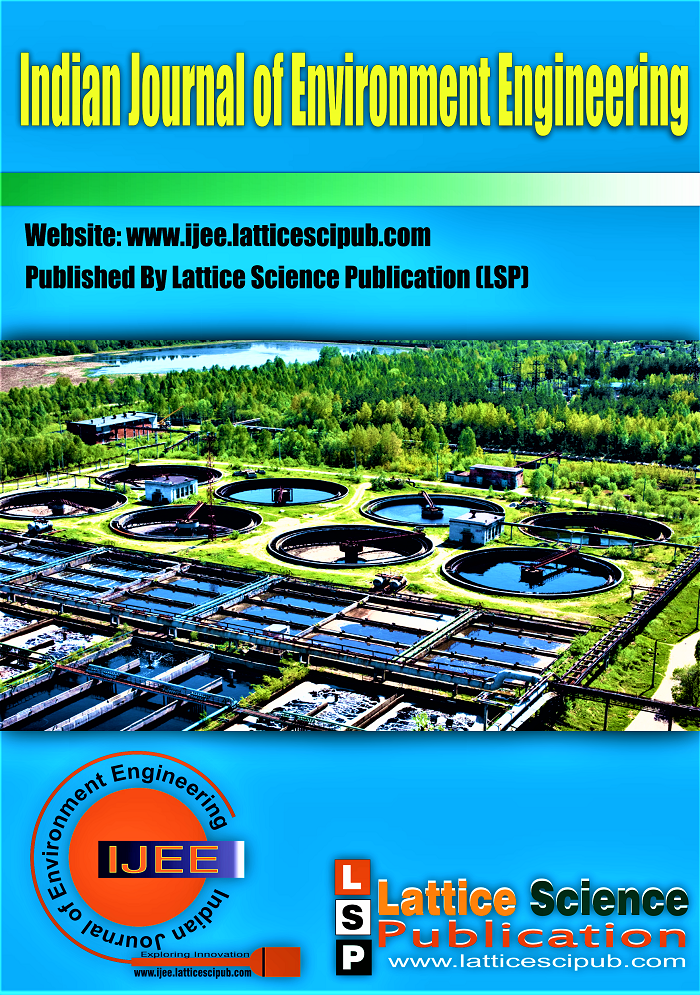Rainfall Trend Investigation of Hemavati Catchment, Karnataka, India
Main Article Content
Abstract
The rainfall trend investigation study supports to judge the periodic pattern of rainfall. The quantifiable evaluation of the overall impacts of different elements, for example, changes in precipitation, temperature, evapotranspiration, environmental changes encouraged by a hazardous atmospheric deviation and human activities on the streamflow is critical for territorial appraisal of water assets and its feasible management. This study focusses on to analyze the seasonal rainfall trend in Hemavati Catchment, Karnataka, India. For the present study, thirty-two years (1990-2021) of seasonal rainfall trend has been examined using the Mann-Kendall assessment and Sen’s gradient estimation methods. The investigation has been carried out for the cold weather season (December-February), hot weather season (March-May), southwest monsoon season (June-September), and post–monsoon season (October–November) by the use of XLSTAT software and the study demonstrations that here is a varied trend in the catchment.
Downloads
Article Details

This work is licensed under a Creative Commons Attribution-NonCommercial-NoDerivatives 4.0 International License.
How to Cite
References
P. K. Srivastava et al., “Long-term trend analysis of precipitation and extreme events over kosi river basin in india,” Water (Switzerland), vol. 13, no. 12, pp. 1–13, 2021, doi: 10.3390/w13121695. https://doi.org/10.3390/w13121695
S. Anie John and J. Brema, “Rainfall trend analysis by Mann-Kendall test for Vamanapuram river basin, Kerala,” Int. J. Civ. Eng. Technol., vol. 9, no. 13, pp. 1549–1556, 2018.
K. Sreelash, R. K. Sharma, J. A. Gayathri, B. Upendra, K. Maya, and D. Padmalal, “Impact of Rainfall Variability on River Hydrology: A Case Study of Southern Western Ghats, India,” J. Geol. Soc. India, vol. 92, no. 5, pp. 548–554, 2018, doi: 10.1007/s12594-018-1065-9. https://doi.org/10.1007/s12594-018-1065-9
R. Quilbé et al., “Assessing the Effect of Climate Change on River Flow Using General Circulation Models and Hydrological Modelling–Application to the Chaudière River, Québec, Canada,”
Can. Water Resour. J., vol. 33, no. 1, pp. 73
–94, 2008, doi: 10.4296/cwrj3301073. https://doi.org/10.4296/cwrj3301073
M. Touseef, L. Chen, K. Yang, and Y. Chen, “Long-Term Rainfall Trends and Future Projections over Xijiang River Basin, China,” Adv. Meteorol., vol. 2020, 2020, doi: 10.1155/2020/6852148. https://doi.org/10.1155/2020/6852148
K. Sreelash, M. M. Mathew, N. Nisha, P. Arulbalaji, and A. G. Bindu, “Changes in the Hydrological Characteristics of Cauvery River draining the eastern side of southern Western Ghats , India,” Intl. J. River Basin Manag., vol. 0, no. 0, pp. 1–49, 2020, doi: 10.1080/15715124.2020.1719119. https://doi.org/10.1080/15715124.2020.1719119
S. B. Bhardwaj, M. Raghav, and R. Bhatt, “An Analysis of Trend Variation in Minimum and Maximum Temperature Pattern in Uttarakhand,” Int.J.Curr.Microbiol.App.Sci, no. 11, pp. 1292–1301, 2020, [Online]. http://www.ijcmas.com.
. Chanapathi, S. Thatikonda, and S. Raghavan, “Analysis of rainfall extremes and water yield of Krishna river basin under future climate scenarios,” J. Hydrol. Reg. Stud., vol. 19, no. October, pp. 287–306, 2018, doi: 10.1016/j.ejrh.2018.10.004. https://doi.org/10.1016/j.ejrh.2018.10.004
P. G. Rao, “Effect of climate change on streamflows in the Mahanadi River Basin, India,” Water Int., vol. 20, no. 4, pp. 205–212, 1995, doi: 10.1080/02508069508686477. https://doi.org/10.1080/02508069508686477
N. Subash and A. K. Sikka, “Trend analysis of rainfall and temperature and its relationship over India,” Theor. Appl. Climatol., vol. 117, no. 3–4, pp. 449–462, 2014, doi: 10.1007/s00704-013-1015-9. https://doi.org/10.1007/s00704-013-1015-9
Rainfall Prediction using Bpnn. (2019). In International Journal of Innovative Technology and Exploring Engineering (Vol. 8, Issue 6S4, pp. 661–668). https://doi.org/10.35940/ijitee.f1135.0486s419
SHAIKH, M. M., & LODHA, Dr. P. P. (2020). Assessment of Hydrological Parameters of the Watershed using ArcSWAT. In International Journal of Recent Technology and Engineering (IJRTE) (Vol. 9, Issue 1, pp. 599–602).. https://doi.org/10.35940/ijrte.a2019.059120
Shekhar, A., & Sinha, S. (2020). Hydrological Simulation of Runoff for a Watershed in Punpun Basin using SWAT. In International Journal of Engineering and Advanced Technology (Vol. 9, Issue 6, pp. 183–187). https://doi.org/10.35940/ijeat.f1309.089620
Sharma, D., & Sharma, Dr. P. (2021). Design and Implementation of Rainfall Prediction Model using Supervised Machine Learning Data Mining Techniques. In Indian Journal of Data Mining (Vol. 1, Issue 2, pp. 20–26). https://doi.org/10.54105/ijdm.b1615.111221
N, d. (2022). Comparison of rainfall and gdp: a feasibility study on introducing rainfall derivatives in the indian weather risk market. In indian journal of economics and finance (vol. 2, issue 2, pp. 39–44). Https://doi.org/10.54105/ijef.b2530.112222





